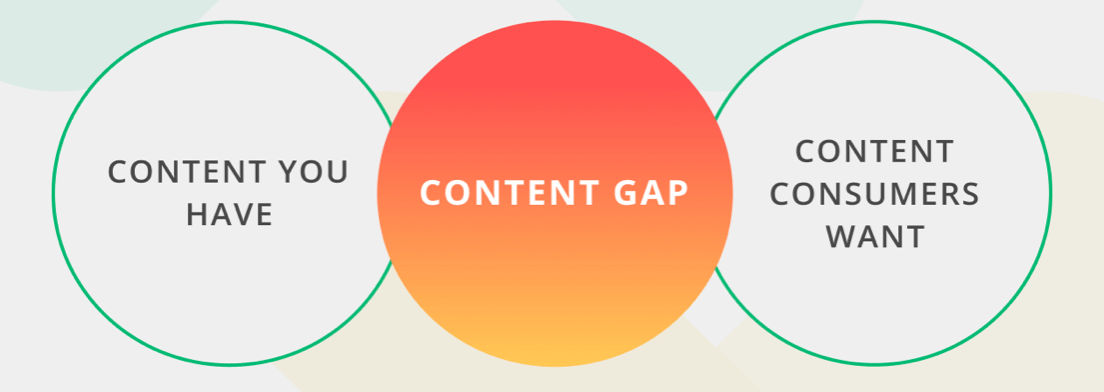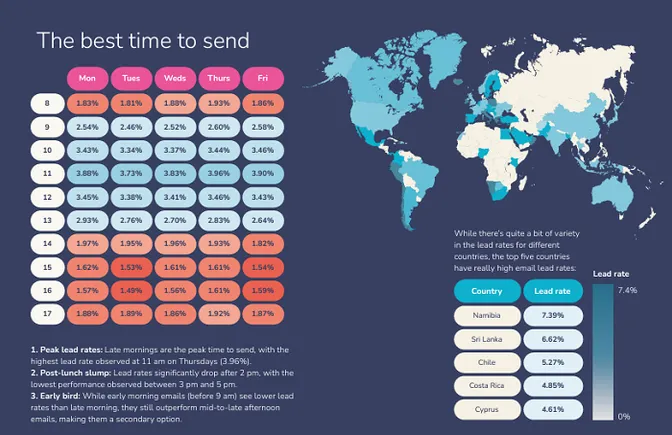How to Perform a Content Gap Analysis: 7 Strategies for SEO Beginners
There are an estimated 3.5 billion searches on Google each day, making a content gap analysis a crucial process when looking to improve website visibility through organic search engine optimization (SEO) efforts. Search engines are constantly scouring the web...

There are an estimated 3.5 billion searches on Google each day, making a content gap analysis a crucial process when looking to improve website visibility through organic search engine optimization (SEO) efforts.
Search engines are constantly scouring the web to find the most relevant web pages to help users find what they are looking for, and we want to make sure that that is you! Although it can be an intimidating task for beginners, the process can be broken down into manageable steps that will help lead to results.
In this guide, we explain exactly why your business could benefit from performing a content gap analysis and then break the process down into seven simple strategies.
Why a Content Gap Analysis Matters
SEO drives 1,000%+ more traffic than organic social media so nailing your content strategy is essential. However much time and effort you spend constructing your website content, if it is not getting picked up by search engines or meeting the needs of the visitors landing on it, it is not fulfilling its purpose.
A content gap analysis will help you identify any gaps in your content strategy and optimize your content to ensure it performs. From refreshing dated content to finding gaps to target with new blog ideas, the content gap analysis will help you maximize organic traffic so you can jump ahead of the competition in search engine rankings.

Image source: https://seopressor.com/
To help you get started on your own content gap analysis, here are seven actionable strategies that will help you take control of your content:
1. Identify customer challenges
By understanding the needs of your audience, you can tailor your content to provide the solution they have been looking for. By establishing what search engine queries people are using to end up landing on your website, you can gain a clear understanding of their pain points.
Speaking within the wider team is also a good way to get insights that you may not have been aware of. For example, the customer service team will have a good idea of what common questions and issues are faced.
Create detailed customer personas that reflect the demographics and behaviors of your audience, being able to tailor your content in a way that resonates with these characteristics. Once you’re aware of the challenges that need addressing, you can start to position your business offering as the solution.
2. Check who you’re up against
A competitor audit is a key part of a content gap analysis, identifying your biggest competitors and seeing how they approach their content strategy.
Start by searching the key search queries that people would also use to find your website, taking note of how similar their business model is and what makes them different from your brand. Look into the content style they are using – are they writing long-form articles? Are they regularly publishing new blogs?
Tools such as Ahrefs also offer powerful insights, allowing you to see how your key competitors are performing organically in comparison to you. Seeing who is ranking best for each keyword will allow you to identify areas in which they are ranking that you are not, offering room for growth.

Image source: https://ahrefs.com/blog/competitor-analysis-tools/
3. Map the website journey
Once you’ve got a better understanding of what changes your website needs to make in order to offer a clear solution for the users’ challenge, it’s time to establish whether the website navigation needs to be tweaked.
Help users move through the sales funnel by creating clear direction. The landing page should show that you are aware of their problem and explain how your business can help solve it. CTAs should be included, which guide them through to further information, allowing them to find out more about your offering and see any case studies or reviews from past customers. After this, they should naturally be able to reach the decision stage, being able to finalize a purchase or contact the support team to discuss further.
4. Find relevant keywords to target
Keyword research is a major part of a content gap analysis, defining your entire strategy. Ideally, you will choose two to three keywords for each page, ensuring the content is tailored to these phrases so you can show the search engine that your page is relevant.
The keyword intent will change from page to page depending on the part of the sales funnel you are working on. For example, the landing page will focus on terms such as “how to” or “best place for” whereas the transactional pages will utilize phrases such as “order” or “near me”.
To find the best keywords, use tools such as Google Keyword Planner to analyze search volume. The trick is to find long-tail keywords as they are less competitive to rank for yet can drive traffic which is highly relevant to your website.
5. Revisit existing content
It’s a common misconception that undergoing a content gap analysis requires a complete overhaul of the entire website – spoiler alert, that’s not true!
A big part of the process is refreshing existing content to make sure it aligns with your goals and the needs of the consumer. Many of the pages we see online are outdated and aren’t so relevant nowadays, but a quick freshen-up can completely transform the content.
Consider what the user will need to know on each page of the website, looking in on it from an outside perspective and asking yourself if it adds value. Check your competitors’ sites and see what approach they have used. You may need to lengthen some pages, break up chunks of text on another, or add more up-to-date statistics.
6. Optimise for SEO
Once the content has been written, that’s just half of the battle. To ensure the content gets seen, it needs to be SEO optimized in order to rank higher in search engines.
Ensure every website page is optimized for the keywords you previously decided to target. Include each term naturally throughout the copy, headings, and URL so the search engines know exactly what to expect from your page.
To build up reputability throughout your whole site, add internal links to other relevant web pages at different levels in the site architecture to not only show relevance to search engines but to guide users through the website.
7. Bridge the content gaps
After analyzing competitor content, gaps will have been revealed. To maximize potential and tap into new areas that haven’t previously been targeted, creating new website pages or improving existing ones will help meet user needs.
This strategy is particularly powerful for businesses who are looking to grow and expand their business, getting an idea of how their competitors are standing out in the market. By staying ahead of the competition and creating a comprehensive offering that meets the needs of the target consumer, a business can become a more appealing site to rank highly in search engines.
The Next Steps For SEO Success
Once the content gap analysis has been planned and executed, you can’t stop there. Maintaining strong SEO rankings requires ongoing work to prove to search engines that you are still relevant and evolving your offering.
New content is a big ranking factor, showing that you are staying on top of your website and providing fresh content. The content gap analysis should be regularly revisited so you can monitor how the new content is performing and make any changes as needed. Not only does this help benefit your SEO efforts, but it will provide invaluable insight into what your website visitors are finding useful.
By following the seven strategies above and continuing to optimize your content, your website will be well on its way to improved visibility as it jumps up the search engine rankings.

 ShanonG
ShanonG 































